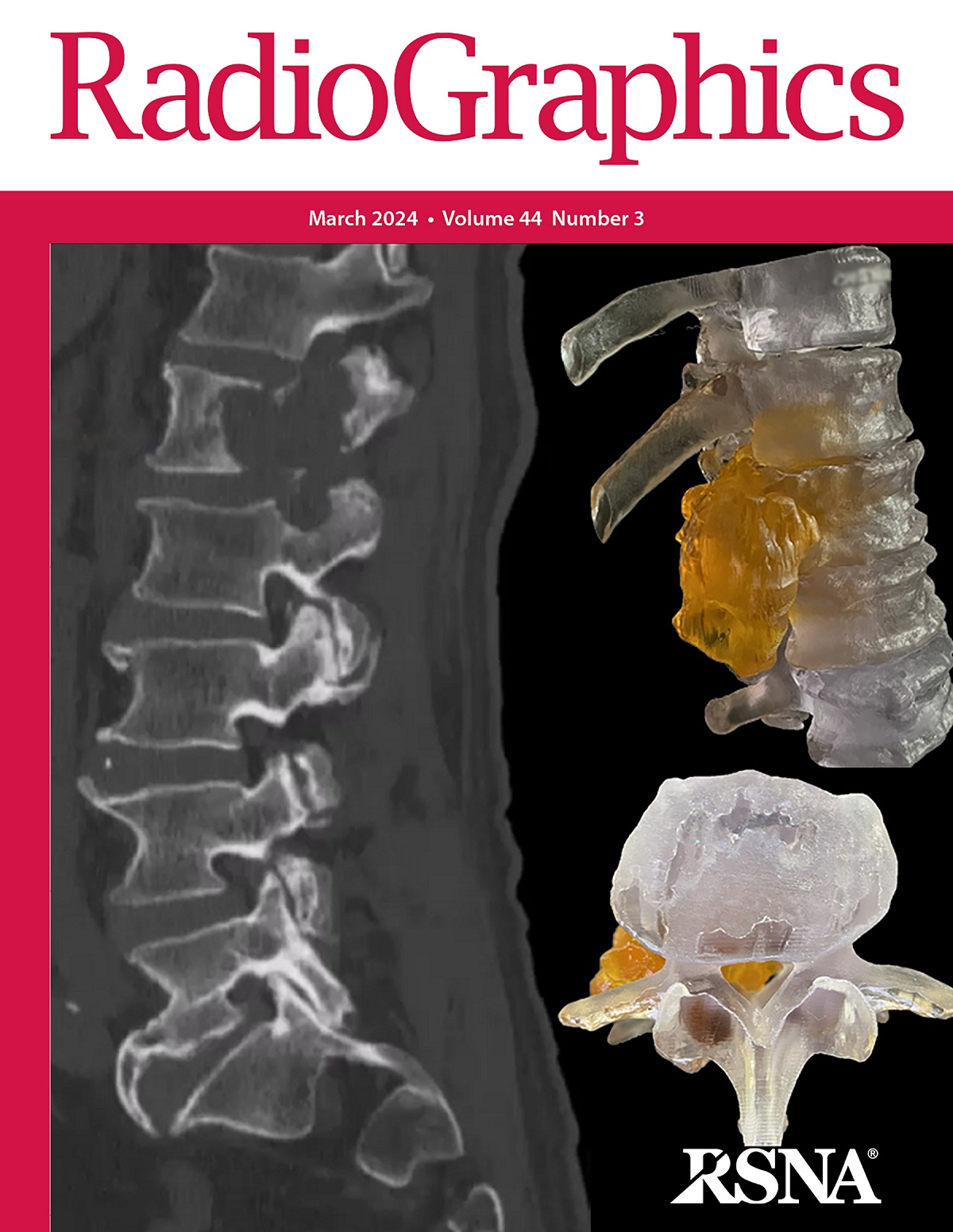求助PDF
{"title":"Biliary Leaks: Multidisciplinary Approach to Diagnosis and Treatment.","authors":"Philip J Schertz, Christopher A Mao, Kade D Derrick, Federico Galar, Carlos B Ortiz, John A Walker, Jorge E Lopera","doi":"10.1148/rg.230155","DOIUrl":null,"url":null,"abstract":"<p><p>Bile leaks arise from various causes such as trauma, complications after hepatobiliary surgery, and intrahepatic malignancies or their associated liver-directed treatments. Bile leaks can result in significant morbidity and mortality. Delayed diagnosis is not uncommon due to nonspecific manifestations; therefore, a high clinical suspicion is needed. A multidisciplinary approach for treatment of biliary leaks with prompt referral to tertiary care centers with experienced hepatobiliary surgeons, advanced endoscopists, and interventional radiologists is needed to address these challenging complications. Management of biliary leaks can range from conservative management to open surgical repair. Minimally invasive procedures play a crucial role in biliary leak treatment, and the interventional radiologist can help guide appropriate management on the basis of a clear understanding of the pathophysiology of biliary leaks and a current knowledge of the armamentarium of treatment options. In most cases, a simple diversion of bile to decompress the biliary system may prove effective. However, persistent and high-output biliary leaks require delineation of the source with tailored treatment options to control the leak. This may be done by additional diversions, occluding the source, reestablishing connections, or using a combination of therapies to bridge to more definitive surgical interventions. The authors describe the different treatment options and emphasize the role of interventional radiology. <sup>©</sup>RSNA, 2024.</p>","PeriodicalId":54512,"journal":{"name":"Radiographics","volume":"44 7","pages":"e230155"},"PeriodicalIF":5.2000,"publicationDate":"2024-07-01","publicationTypes":"Journal Article","fieldsOfStudy":null,"isOpenAccess":false,"openAccessPdf":"","citationCount":"0","resultStr":null,"platform":"Semanticscholar","paperid":null,"PeriodicalName":"Radiographics","FirstCategoryId":"3","ListUrlMain":"https://doi.org/10.1148/rg.230155","RegionNum":1,"RegionCategory":"医学","ArticlePicture":[],"TitleCN":null,"AbstractTextCN":null,"PMCID":null,"EPubDate":"","PubModel":"","JCR":"Q1","JCRName":"RADIOLOGY, NUCLEAR MEDICINE & MEDICAL IMAGING","Score":null,"Total":0}
引用次数: 0
引用
批量引用
Abstract
Bile leaks arise from various causes such as trauma, complications after hepatobiliary surgery, and intrahepatic malignancies or their associated liver-directed treatments. Bile leaks can result in significant morbidity and mortality. Delayed diagnosis is not uncommon due to nonspecific manifestations; therefore, a high clinical suspicion is needed. A multidisciplinary approach for treatment of biliary leaks with prompt referral to tertiary care centers with experienced hepatobiliary surgeons, advanced endoscopists, and interventional radiologists is needed to address these challenging complications. Management of biliary leaks can range from conservative management to open surgical repair. Minimally invasive procedures play a crucial role in biliary leak treatment, and the interventional radiologist can help guide appropriate management on the basis of a clear understanding of the pathophysiology of biliary leaks and a current knowledge of the armamentarium of treatment options. In most cases, a simple diversion of bile to decompress the biliary system may prove effective. However, persistent and high-output biliary leaks require delineation of the source with tailored treatment options to control the leak. This may be done by additional diversions, occluding the source, reestablishing connections, or using a combination of therapies to bridge to more definitive surgical interventions. The authors describe the different treatment options and emphasize the role of interventional radiology. © RSNA, 2024.


